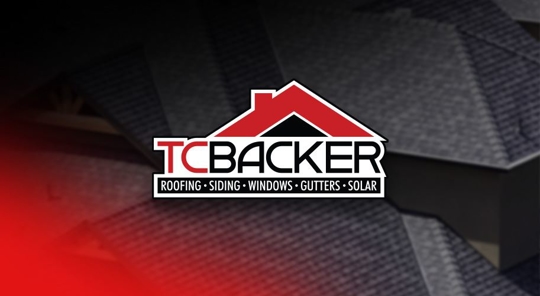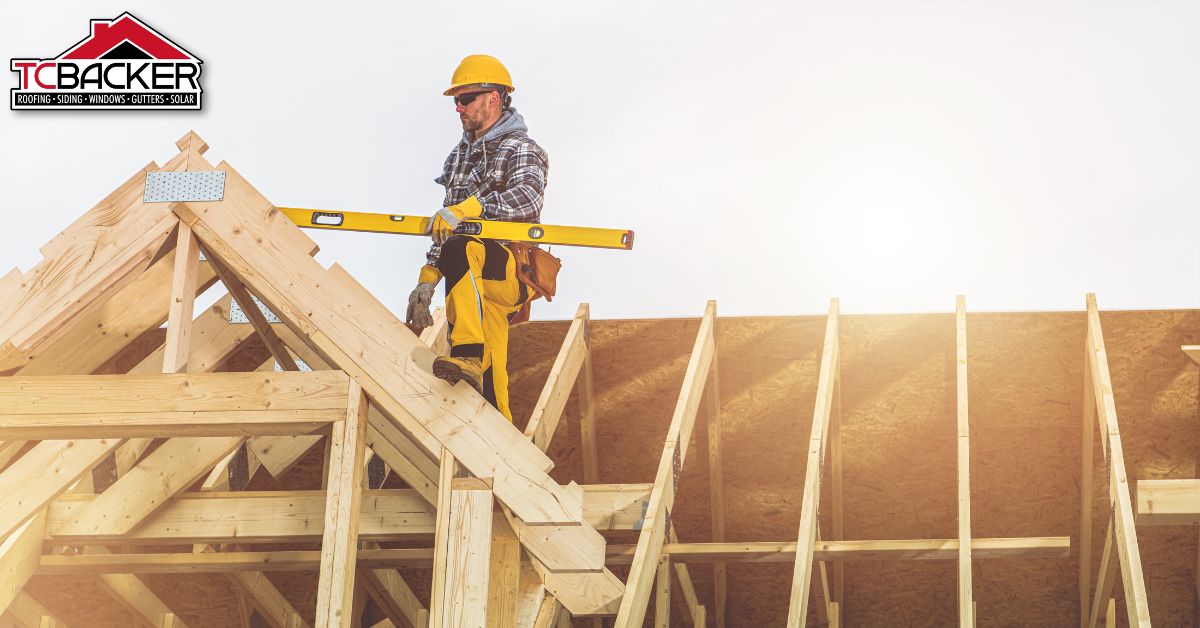When it comes to choosing the right roofing material for your home, there’s a lot to consider. After all, the roof plays a large part in the overall look, feel, and protection of your home.
You’ll need to consider the architectural style of your home, as well as the cost, installation, and maintenance requirements for the roofing material you choose.
With the right information, you can make an informed decision that will give you the control you need to make the best choice for your home.
Let’s take a look at the common roofing materials and factors to consider.
Consider Your Architectural Style
When it comes to protecting your home from the elements, it’s important to make sure the roof you select complements the look and feel of the rest of the structure. Your roofing choice should match or enhance the color scheme of your home, as well as provide the right amount of insulation.
You’ll also want to make sure your roofing material fits with the architectural style of your house. For example, a Mediterranean-style home would look best with terracotta tiles, while a Colonial-style home would look best with slate or asphalt shingles.
Taking the time to consider the look and feel of your home will help you choose the right roofing material for your architectural style. With this in mind, let’s take a look at some of the most common roofing materials.
Common Roofing Materials
With so many options, it’s hard to decide which roofing material best suits your home’s aesthetic.
Popular choices include asphalt, slate, metal and tile, each providing various waterproofing techniques and insulation options.
Asphalt is popular and cost-effective, but it doesn’t provide the same durability or natural look as tile, slate or metal.
Slate is a classic choice that provides a great look and excellent protection, but it’s also heavy and requires a roof that’s capable of supporting it.
Metal is a modern choice that’s lightweight and durable, but it can be quite expensive.
Tile is a popular option as well and is long-lasting, but it’s also heavy and requires extra support, and it can be expensive as well.
No matter what option you choose, understanding the pros and cons of each roofing material can help you make an informed decision that best suits your home’s architectural style.
Factors to Consider
When deciding which roofing material is right for your home, there are many factors to consider.
Climate, cost, durability, and aesthetics are all important points you should take into account.
Be sure to take the time to research the best material for your local climate and budget, while also looking at how long the material will last and how attractive it is.
Climate
No matter where you live, the climate will play a major role in the roof you pick – make sure it’s one that can withstand the elements! Here are 4 key points to keep in mind when selecting a roofing material based on climate:
Durability: Choose a material that can stand up to the environmental conditions in your area, such as extreme heat, cold, snow, and wind.
Energy Efficiency: Consider how much energy your roof may need to absorb or reflect, depending on the climate. Insulation benefits can also vary depending on the material.
Color: Certain colors can help keep your home cooler or warmer based on the climate. Darker colors absorb more heat, while lighter colors reflect more.
Maintenance: Some materials require more maintenance than others, depending on the climate. For example, areas with extreme weather conditions may need more regular maintenance to prevent damage.
Taking climate into consideration is a crucial step in selecting the right roof for your home. By understanding the elements that your roof will have to withstand, you can ensure it will keep you safe and comfortable for years to come.
And when you factor in the cost…
Cost
Cost is an important factor when selecting the perfect roof for your home, so make sure you consider it carefully.
Installation costs can vary greatly depending on the type of materials you select, the complexity of the installation, and the cost of labor in your area. You should also take energy efficiency into account. Some materials are better at insulation and could end up saving you money in the long run.
It’s important to weigh the cost of the materials, installation, and long-term energy savings against your budget. It’s also important to consider the lifespan of the roofing materials you choose. Some materials are more durable and may last longer than others, so you will want to factor this into the cost of the roof.
Additionally, some materials are more difficult to install than others, which could increase the cost of labor. Carefully weigh all of these factors to make the best decision for your home.
Durability
Considering the durability of your roofing materials is key to ensuring your home is well-protected for years to come. When making the long term investment of a new roof, it’s important to consider the type of material that’s right for your home’s architecture.
Here are a few factors to consider:
• The climate in your area
• The type of home you live in
• The energy efficiency of the material
Different materials are more durable in different climates and types of homes. Some of the most popular materials for roofing are metal, asphalt shingles, wood, clay, and slate.
Asphalt shingles tend to be the least expensive and most common, but metal roofs are gaining popularity for their energy efficiency and durability. Wood shingles are popular for their classic look, but require more maintenance and are prone to rot in wet climates. Clay and slate are the most expensive and require the most maintenance, but they look beautiful and can last for a lifetime.
No matter which roofing material you choose, considering the durability is key. Your roof is one of the most important investments you can make, so do your research to find the best option for your home.
Aesthetics
When it comes to your home’s exterior, the beauty of your roofing material can be the perfect way to make a statement and express your unique taste. Visual appeal, texture variation, and color are all important factors to consider when selecting the right roofing material.
Different types of roofing materials can offer a range of design options, from classic shingles to modern metal panels. You can also choose from a variety of colors and textures to match the style of your home. With a little bit of research and creativity, you can find the perfect roofing material to complement the look and feel of your home.
Aesthetics are important, but it’s also important to make sure that the roofing material you choose is appropriate for your home’s architectural style. You want to make sure that the roofing material you choose is durable, energy efficient, and easy to install.
Doing your research ahead of time and consulting with a professional roofer can help you make the best decision for your home.
Now let’s turn to the next consideration when selecting a roofing material: installation considerations.
Installation Considerations
Once you’ve determined the design of your structure, installation considerations become paramount. When selecting the right roofing material, the ease of installation is just as important as aesthetics.
Make sure you have the necessary roofing tools and supplies to complete the job safely and correctly. Roofing safety is a must when it comes to installation, as proper installation techniques are essential to ensure the longevity of your roof. Always read and follow the manufacturer’s safety guidelines, as well as any local building codes and regulations.
The right roofing material can make all the difference when it comes to installation. If you have any doubts about your ability to install the material correctly, consider hiring a professional. Even with all the right tools and materials, some roofing materials are best left to the experts.
With the right preparation and installation, your roof will be a stunning addition to your home for years to come. With that in mind, let’s consider the maintenance requirements of various roofing materials.
Maintenance Requirements
It’s important to consider the maintenance requirements of your chosen roofing material, as proper upkeep can help make sure it looks great for years to come! Knowing the maintenance needs of your roofing material is key for long-term success, and it’s easy to maintain and repair your roofing material with a few simple tips.
Here are 4 maintenance tips to help you keep your roof in great shape:
Inspect your roof regularly for any signs of damage or wear and tear.
Repair any minor damage quickly to prevent further damage from occurring.
Clean debris from gutters and other areas around the roof regularly.
Schedule a professional inspection annually to check for any potential issues and to ensure the roof is in good condition.
These maintenance tips can help you keep your roof in tip-top shape and minimize repair costs over the years. By being proactive with your roof’s maintenance, you can enjoy the beauty of your architectural style for a long time.
Conclusion
When choosing a roofing material, it’s important to consider your architectural style and the various factors that come into play.
It’s also important to consider installation and maintenance requirements.
With the right material, you can get the most out of your roof and enjoy its beauty for many years to come.
Don’t forget to consult with a professional to ensure you’re making the right choice. They can help you weigh the pros and cons of each material and determine the best fit for your needs.
Take the time to research and make an informed decision, and you’ll be sure to have a roof that adds to the beauty of your home.
Take the first step towards finding the perfect roofing material for your home by reaching out to a trusted professional, such as TC Backer Construction. Our team is ready to assist you in making an educated decision and providing high-quality roofing services tailored to your needs. Start your journey towards a stunning and durable roof today.
The post Choosing The Right Roofing Material For Your Architectural Style appeared first on TC Backer Construction.





